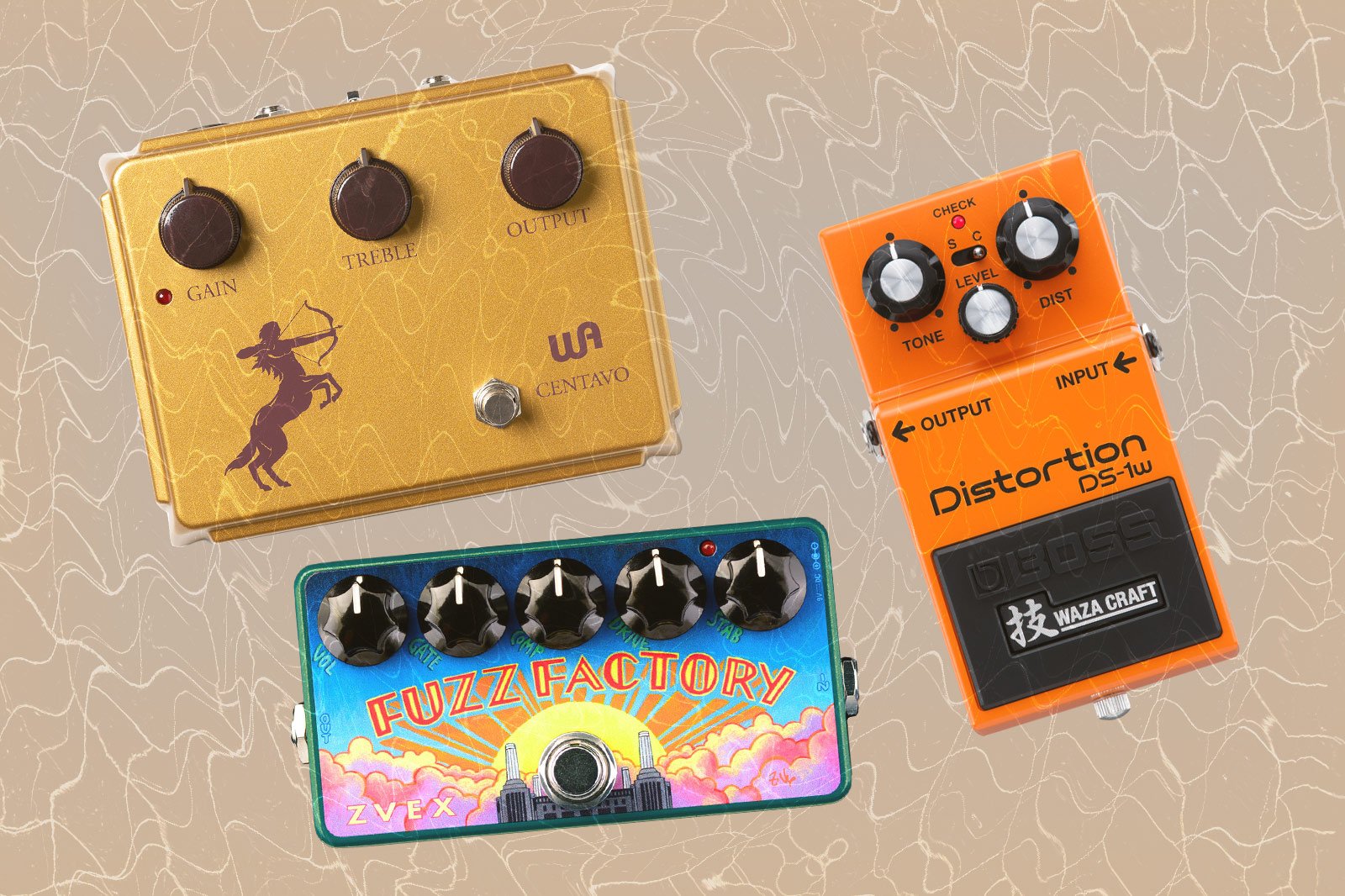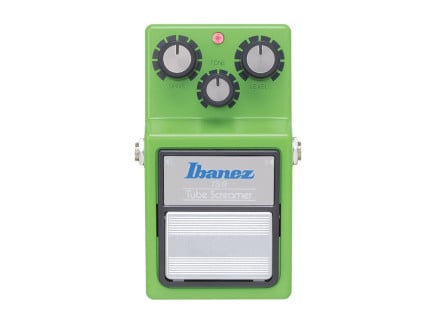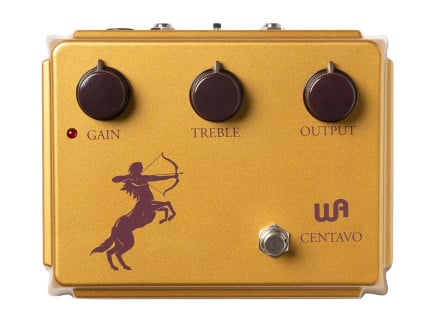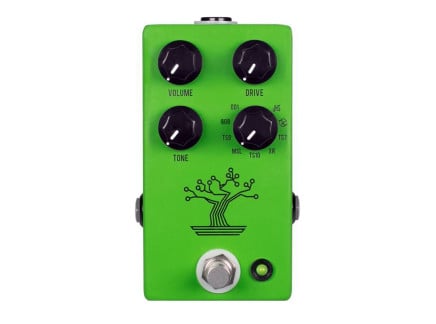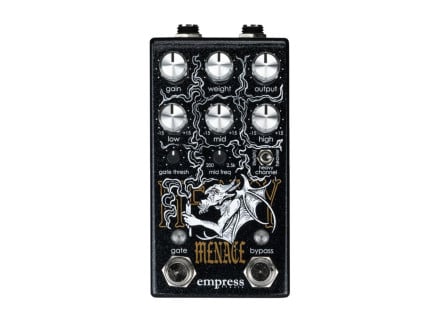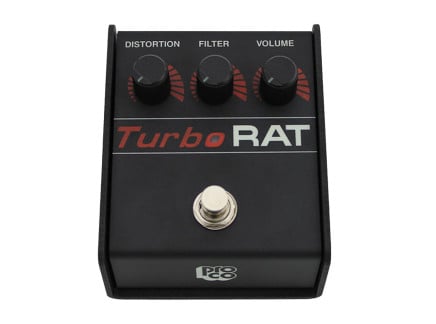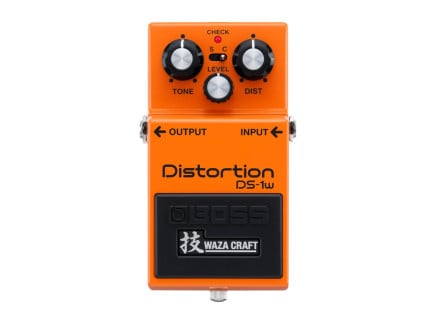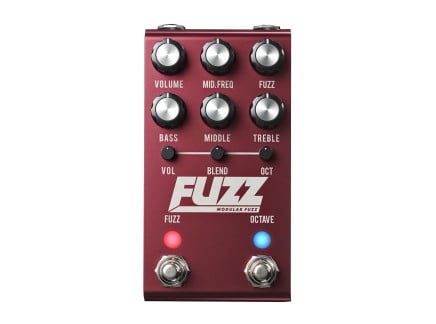Overdrive, distortion, and fuzz effects come in a lot of different flavors. Whether you’re looking to add some subtle breakup, classic crunch, dense distortion, or full-on fuzzed out insanity to your sound, there’s likely one that’s perfect for you.
Regardless of genre, gain and distortion-based effects are some of the most useful types of pedals. It’s a broad topic, but these types of effects span three main categories: overdrive, distortion, and fuzz. A lot of times the definitions are used interchangeably, but each affects the signal differently.
They’re best known in pedal form, but all three are relevant to multiple instruments, like bass guitar, keyboards, even vocals and drums. You can even add them as insert effects, whether you want to go the plugin or outboard hardware route.
Considering the confusion around their differences, let’s dive into what they do, some classic and modern circuit examples, and discuss how to decide which is best for achieving the sound that you want.
What’s the Difference Between Overdrive, Distortion, and Fuzz?
Overdrive, distortion, and fuzz all work by introducing clipping to the waveform of the signal. It’s as simple as that. But they each do it in different ways, and to different extremes. Clipping can occur at many points in the signal chain—it can be good, or it can be bad. So, what is clipping?
In the most basic sense, clipping is when the peaks and troughs of a waveform are cut off, or "clipped"...resulting in the "flattening" of the waveform at its upper and lower edges. Clipping can occur when an input signal in a circuit exceeds that circuit's expected input range—resulting in an unpleasantly distorted sound. But, that isn't always the case, and clipping can be induced for creative purposes.
In the world of guitar effects, there are different types of clipping effects, ranging from soft to completely annihilated. Soft clipping is more gentle and subtle and usually found in overdrives. Hard clipping, like you get from distortion pedals, isn’t so gentle. And fuzz is the most extreme of all of them. The harmonic content of notes changes with each type of clipping, adding new frequencies (harmonics) to the fundamental tone. This creates a complex sound that adds color and sustain to the signal it’s affecting.
The highest and lowest edges of audio waveforms are usually inherently curved. Soft clipping creates a slightly flatter curve with rounded upper and lower edges; hard clipping flattens it out even more. The type of clipping fuzz effects provide can vary, but often they clip signals so intensely that the could basically turn sine wave signals into a square wave.
Let’s examine each of these effects in greater depth.
What is Overdrive?
Of all three categories, overdrive and distortion seem to be the two that get confused the most. So what’s the exact difference between them? Think of overdrive as a smoother type of distortion. Overdrives usually retain more of the core guitar tone, and are great paired with other gain pedals and a good amp. Conversely, a lot of distortion pedals give their own sonic character to the sound.
Overdrive clips the signal the least out of the three categories. That’s not to say certain models can’t get nasty. But generally, overdrive pedals are known to be mellower while still adding some edge to the sound. There are different ways to use them, and a lot of players use an overdrive pedal to push the input of a tube amp that’s already breaking up, rather than relying on a pedal alone to do all the tone-shaping work.
It’s not necessarily just the waveform dynamics that overdrive affects. A lot of circuits also come with their own EQ profiles. Take the godfather of overdrives, Ibanez Tube Screamer. Its pleasant midrange boost and low end rolloff are a great complement to other tone factors like single coil pickups. Most overdrive pedals offer at least three controls, normally input gain, tone/EQ, and output volume. Some offer more EQ points, but the 3-knob model is the most common.
Many overdrive pedals are in concept trying to mimic the pleasant sound of a tube amp subtly breaking up. A common way of doing this involves a dual-stage process. The signal is boosted using an op-amp or transistor, and then diodes are used to clip and add harmonics to the boosted signal. The diodes and how they’re used in the circuit, e.g. symmetrical or asymmetrical configurations, have a large impact on how the overdrive circuit sounds.
Overdrive pedals have been on the market since the late 1970s, and the most infamous overdrive pedal in history is likely the previously-mentioned Ibanez Tube Screamer. It was so influential that an overwhelming number of boutique overdrives are offshoots of the original circuit—offering slight modifications/tweaks, but keeping close to the original design.
And though the Tube Screamer has earned its iconic status, there are a number of other models that are just as historically beloved, like the BOSS OD-1 (and more recently the Super Overdrive and Blues Driver) and Nobels OD-1, a staple of Nashville studio players
Over the next few decades, overdrive pedal designs were refined, with many manufacturers putting their own spin on them and adding to the simple concept. Then, in the mid '90s they evolved even further with the advent of “transparent” overdrives, two of the most popular being the Klon Centaur and Paul Cochrane’s Timmy. This type of overdrive circuit blends some of the clean signal into the clipped signal, providing a type of gain effect focused on articulation over dirt. They also work well with a variety of amps and stack well with other types of gain pedals.
Though overdrive pedals have been around for decades, manufacturers haven’t stopped trying to innovate new designs. JHS Bonzai is a single, standard-sized pedal that has a rotary dial to select between eight models of Tube Screamer sounds, including JHS and Keeley custom settings.
The Earthquaker Devices Westwood is a "transluscent" overdrive/boost pedal with an active EQ tone stack and an all-analog circuit. Fairfield Circuitry's Barbershop has a drive control that can increase signal headroom depending on where it is in its travel.
Original Klon Centaurs fetch insane prices on the used market, but there is no shortage of alternatives. Take the Warm Audio Centavo, an accurate recreation of the transparent overdrive legend from the circuit to the aesthetics. More recently, Origin Effects introduced the Halcyon Gold, a Klon-inspired overdrive that uses adaptive circuitry technology for a highly sensitive and expressive playing experience.
In summary: overdrives are useful in a lot of ways. You can use them as your base tone, drive the input of an amp for more sustain and saturation, or stack them with other pedals.
What is Distortion?
Distortion offers a more aggressive type of clipping called "hard clipping." Distortion pedals provide more gain by clipping the signal more aggressively, but most still aim to sound focused. With distortion, the peaks and troughs of the waveform are less rounded than overdrives to give a sound with more edge and saturation.
Due to more available gain, distortion pedals are normally used on a clean amp channel. And due to the more significant clipping, some playing and picking articulation is usually lost in translation. But the tradeoff is a heavier sound with increased gain and sustain. When it comes to distortion circuits, just like overdrive circuits, most of them use a combination of op-amps and diodes as their signal lifeblood. Where many overdrives are powered by op-amps, it’s not uncommon for distortions and fuzz pedals to use transistors as their main source of clipping.
As almost every guitar player’s introduction into the pedal world, some distortions have attained a legendary status. The late 70s saw the release of the Proco Rat and MXR Distortion+. BOSSs’ DS-1 is one of the best-known (and most polarizing…) distortion pedals of all time. Its reputation in the guitar community is mixed, but it’s been used by legends like John Frusciante, Steve Vai, and Kurt Cobain—so, it's worth giving it some credit. Additionally, BOSS recently introduced the DS-1W Waza Craft pedal, featuring a refined circuit and additional distortion mode.
Despite being a simple effect, modern manufacturers are always finding forward-thinking ways to make new distortion circuits. Still popular today, these circuits are a common blueprint for newer models like the 1981 Inventions DRV Overdrive. It sports distortion and preamp circuits with boosted 18V headroom.
The Empress Heavy Menace offers three tone modes and an engageable gate for cleaning up the sound. And the Retro Mechanical Labs 432k Rev2 might look more like a Eurorack module than an effects pedal, but it’s a complete distortion workstation with CV controls for integrating it with other hardware.
What is Fuzz?
Did you know that fuzz has been around since the middle of the 1960s? One story about its invention goes that during a recording session, the tube mixing console being used had something wrong with it. Those in on the session actually liked the grainy, glitchy goodness it did to the audio.
By design, fuzz pedals are intended to sound like something going wrong in the signal chain, like a busted console or torn speaker. Because of this a lot of them are…quirky. And that’s the appeal. Certain fuzz pedals like the Dunlop Fuzz Face like to be the first in the signal chain, before any buffers.
Unlike overdrive and distortion, most fuzz circuits utilize transistors that have a lower-fidelity sound and add more harmonics into the signal as the waveform becomes more squared. The type of transistor used is one of the primary contributors to how the fuzz sounds.
Germanium transistors have a smoother tone profile, while silicon transistors are more aggressive and bright. Some models come in versions that feature both, like the famous Electro-Harmonix Big Muff. The Big Muff is such a seminal fuzz pedal there are now multiple versions, variations, and offshoots. The Earthquaker Devices Hizumitas (one of our favorite fuzzes) is itself an adaptation of a vintage clone of the EHX design—which says a lot about the scope of the Big Muff's influence.
The first fuzz pedal was released in 1962 by Gibson’s subsidiary company Maestro. The Fuzz-Tone FZ-1 changed everything. It gave guitarists access to a revolutionary sound that would forever change and evolve, inspiring countless players, songs, and styles along the way.
Fuzz was immortalized forever in 1965 when Keith Richards of the Rolling Stones used the Maestro Fuzz-Tone FZ-1, on their hit “(I Can’t Get No) Satisfaction." The middle of the decade saw the Tone Bender come out of London, and favorite of players like Jimmy Page. And a few years later Jimi Hendrix was using the Fuzz Face. Then in 1969 Electro-Harmonix released a model that’s still a hit today—the aforementioned Big Muff.
Today there are a lot of unique fuzz pedals on the market. Retro Mechanical Labs is doing some very cool things with clipping circuits, and their Electron Fuzz is a pedal with a lot of tone controls and CV functions that lets it integrate with synths and external controls. Death By Audio's Echo Dream 2 is a fuzz/delay/modulation hybrid, and the Fairfield Circuitry Roger That! takes a completely new, novel approach to fuzz-like tones.
As the granddaddy of clipping, fuzz provides its own sound altogether. Due to its unpredictability, it has huge appeal to more adventurous guitarists. But it works well with guitar and bass, and there’s no mistaking its credibility as a novel invention in music technology.
Conclusion
Overdrive, distortion, and fuzz are often confused with one another, but the differences between them are simple. Each clips the signal to a certain extent. How much clipping you want depends on your style and the sound you’re chasing.
Whether you’re looking to do something different with the sound you’re getting from your amp or want to add more sound flavors to your rig, these types of effects offer a number of different uses from signal booster, treble booster, additional gain, and increasing the utility of a single channel amp.
If you want to add some subtle breakup and harmonics to your sound, overdrive is best. Need crunch and sustain? Distortion is probably the sound in your head. And if you want to mutilate your sound, fuzz will certainly get you there.
They’ve been around forever, but manufacturers continue evolving the concept. It’s exciting to think about where circuits like these will go next.
Brandon Stoner is a lifelong musician who owns more guitars than anyone needs. Having toured nationally, he is a trained audio engineer that has worked in studios and on stages across the United States. As a lover of all things writing and music technology, he crafts every piece with his dog Max on his lap.

